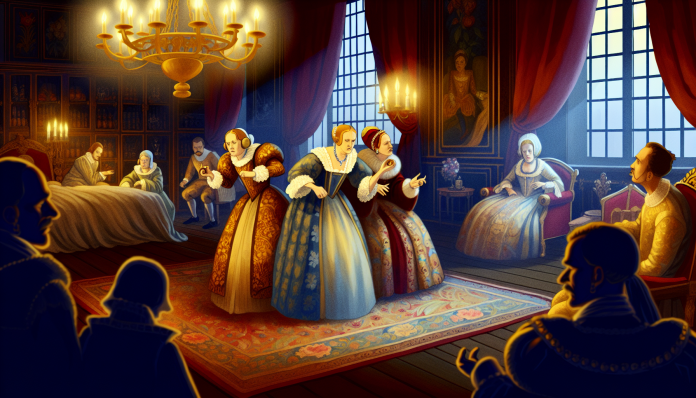Introduction
Throughout history, powerful women skillfully navigated the treacherous waters of court politics by leveraging their relationships with kings and rulers. One illustrious figure who epitomized such cunning was Anne Boleyn, the infamous second wife of King Henry VIII of England. The 16th-century scandal surrounding her rise and fall not only rocked the English court but also led to sweeping religious transformations. This period was marked by strict societal norms regarding female behavior, particularly in the realms of love and sexuality, making Boleyn’s actions all the more audacious.
The Scandal
Anne Boleyn captivated King Henry VIII with her charm, wit, and striking beauty. Initially courted by the king in the early 1520s, Boleyn employed a clever blend of flattery and intrigue that set her apart from other mistresses. Unlike the king’s previous paramours, she insisted on marriage rather than remaining a mere mistress, which fueled Henry’s desire and ultimately his desperation to annul his first marriage to Catherine of Aragon.
Key events unfolded as follows:
-
1641: The Courtship – Boleyn’s refusal to become Henry’s mistress, opting instead for a marriage proposal, triggered an unyielding obsession. She tantalized him with coy glances and strategic interactions within the court.
-
1533: Secret Marriage – Henry married Anne in secret after obtaining a dispensation from the Pope (who ultimately refused to annul his marriage to Catherine). This act not only led to a rift with the Catholic Church but also ignited the English Reformation—a historic religious shift.
- 1536: The Downfall – Boleyn’s turbulent reign as queen lasted only three years. Accused of adultery, treason, and incest, she was sentenced to death and executed. Many believe these charges were fabricated as a means to remove her from the throne and allow Henry to remarry.
This scandal reverberated throughout England, leading to the establishment of the Church of England. A contemporary of the court, the chronicler Edward Hall, remarked, “the king’s heart so longed after her that it brought about much that was to follow.”
Moral and Cultural Analysis
In 16th-century England, societal expectations for women were stringent; virtue and modesty were prized above all. Anne Boleyn defied these norms not only by becoming the subject of the king’s affections but also by making bold choices that ultimately secured her downfall.
-
Society’s Reaction: The scandalous nature of Boleyn’s rise led to polarized views. Some admired her audacity, seeing her as a strong female figure in a male-dominated world, while others condemned her as a harlot and blamed her for the ensuing chaos in the monarchy.
-
Consequences for Those Involved: Boleyn paid the highest price for her aspirations, losing her life. Henry, however, continued his pursuit of marital happiness, further entrenching the cycle of political and sexual intrigue that characterized his reign.
- Modern Perspective: Today, Boleyn’s story would likely be interpreted through a lens of empowerment and agency. Discussions surrounding her life might emphasize her ability to leverage sexuality and intellect in a patriarchal society. The disastrous outcomes for powerful women like her resonate in modern considerations of female ambition and the social risks that accompany it.
Anne Boleyn’s tale is not just one of seduction; it serves as a striking reminder of the power dynamics at play in history—and how one woman’s desires could reshape an entire nation.

